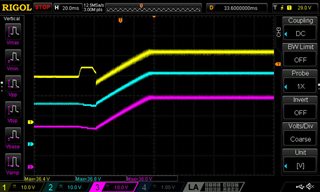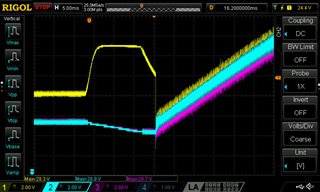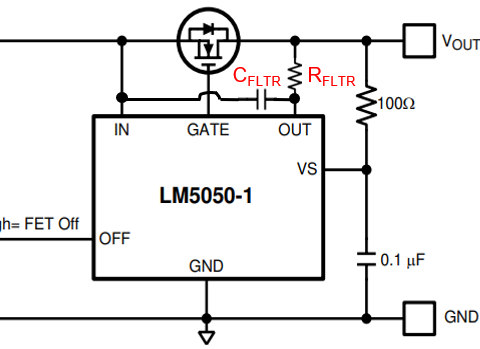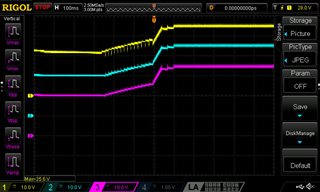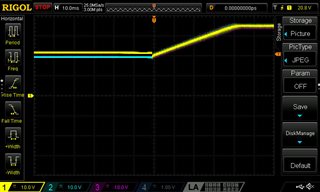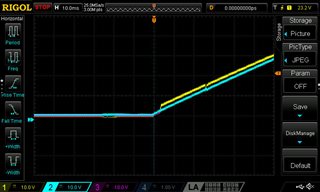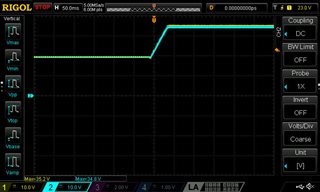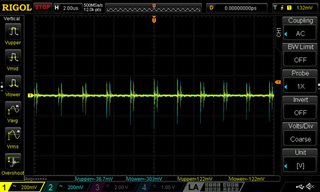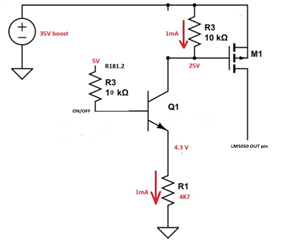Tool/software:
Hello TI team,
I would like to share with you an issue we are finding by using LM5050-1 device in our design:
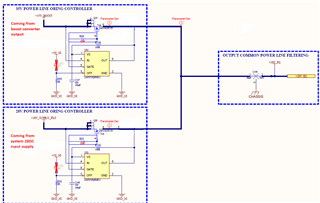
As you can see, we are implementing a OR-Ing with MOSFETs controlled by LM5050-1. Take into account that:
- +35V_BOOST is the input of the upper OR-Ing and it comes from a boost DC/DC converter output.
- +28_SUPPLY_FILT is the supply input of the system.
- If 35V boost output is enabled, the common OR-Ing output should be 35V.
- If 35V boost output is disabled, the common OR-Ing output should be 28V
We are checking the design behavior and it is not as expected:
- When 35V boost is enabled, the common output measured is 34.5V. LM-5050 gate pin voltage is measured also at 35V. That means that LM5050 controller is detecting a reverse current condition and gate pin is short circuited to IN pin (35V). Thus, the mosfet is OFF and the current flows through body diode. How could we avoid this behavior?
Thanks in advance for your support.



